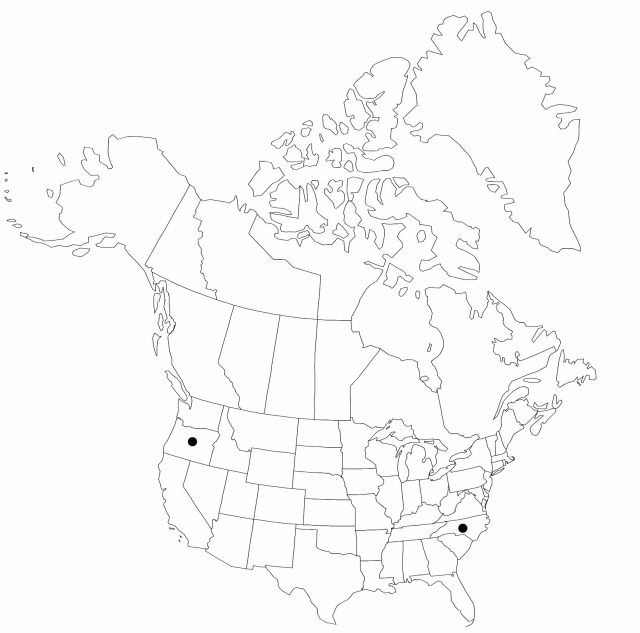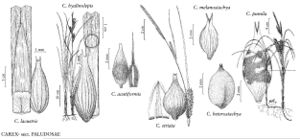Carex pumila
in A. Murray, Syst. Veg. ed. 14, 846. 1784.
Plants colonial; rhizomes long-creeping. Culms central, slender, trigonous, 8–30 cm, smooth. Leaves: basal sheaths persistent, straw colored to dark brown, the youngest sometimes tinged reddish purple; ligules 0.2–1.3 mm, wider than long; blades somewhat glaucous, M-shaped, 1.5–3.3 mm wide, coriaceous, glabrous. Inflorescences 2.5–19 cm; rachis beyond proximal pistillate spike rounded-angled, smooth; proximal 1–3(–4) spikes pistillate, strongly overlapping, ascending to spreading; distal spikes erect; terminal 1–3 spikes staminate. Pistillate scales lanceolate to ovate, apex acute to acuminate-awned, scabrous-margined apically, glabrous. Perigynia ascending, ± distinctly 8–20-veined near base, thick-walled and corky, broadly ovoid, 4.5–8 × 2–3.5 mm, glabrous; beak 0.8–1.6(–2) mm, bidentulate, teeth straight, 0.2–0.7(–1) mm. 2n = 82.
Phenology: Fruiting May–Jun.
Habitat: Sand dunes, sandy disturbed sites near the coast
Elevation: 0–20 m
Distribution

Introduced; N.C., Oreg., South America, Asia.
Discussion
Carex pumila is a rare introduction from eastern Asia, first discovered in the flora in 1906, near Portland, Oregon, and collected there over the next decade. In 1959, it was found in coastal North Carolina and is still extant there (A. A. Reznicek 1993).
